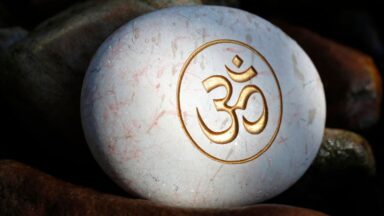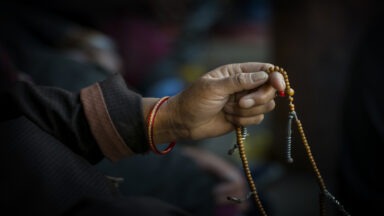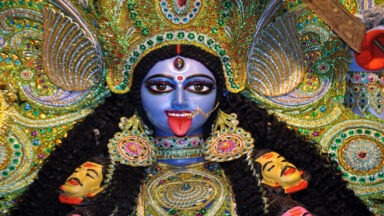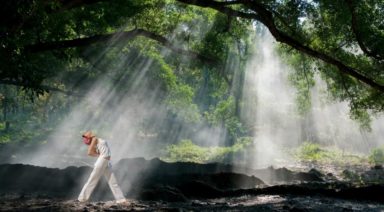Cleansing for Your Dosha

Being an Ayurvedic Practitioner, I see the world through the eyes of Ayurveda. Everyone is unique and needs something different according to their personal prakruti or natural doshic make-up. By understanding someone’s natural state and their current state of imbalance (vikruti) I am able to discern exactly what treatment protocol would be most appropriate. Other things to consider are the mental and emotional states, type of job, stress, family and anything else that is influencing one’s life situation. If a client were going through a divorce, moving house, changing jobs or having any other major transition or stress in their life, it would not be a good time to cleanse.
Knowing the basics of Ayurveda will help you to understand your unique approach to cleansing but the most important gauge is awareness of and listening to your own body. Ayurveda literally means the knowledge and wisdom of life. It is the holistic healing system, originating in India over 5,000 years ago and is still actively being used today throughout many parts of the world.
Ayurveda views health and disease as the end result of how we interact with the world, in terms of our beliefs, perceptions, thoughts and feelings, which then ultimately determine our actions. Actions in harmony with our inner nature create health, while those dis-harmonious with our inner nature create disease. Ayurveda is the science of developing greater harmony with our internal and external environments.
Your inner nature is called your constitution or prakruti and is a unique blend of the three doshas: vata (ether + air), pitta (fire + water) and kapha (earth + water). Your constitution was determined at the moment of your conception and is with you your entire life. It determines what is in harmony with your nature and what will cause you to become out of balance, sick and diseased. Knowledge of your constitution is essential to developing optimal health.
Ayurveda assists us in journeying back to optimal health by balancing the five elements in the body and mind through the use of herbs, diet, colors, aromatherapy, lifestyle changes, yoga, and meditation. When we follow diet, food and lifestyle choices that support our unique dosha then we will be healthy and have less of a need to cleanse in any drastic way. However once there is a build up of ama or toxicity in the body that cannot be eliminated, a cleansing process is essential. Traditionally an Ayurvedic cleanse called Pancha Karma (Five Actions) would be recommended and the patient would go to a Pancha Karma hospital or centre for a period or weeks or months depending on the severity of the disease to undergo the cleansing treatment.
Cleansing for Your Dosha.
Vata is comprised primarily of the ether and air elements therefore the qualities of vata are light, cold, rough, dry and changeable. Vata types are naturally slender with long, fine bones. They tend towards feeling cold, anxious, scattered, overwhelmed, under-weight and may suffer from symptoms such as constipation, dry skin, insomnia or nervous system disorders.
As vata is on the cold, light side and doesn’t do well with fasting, it is important that cleansing is gentle and nurturing otherwise fear, worry, constipation and stress will all increase. The focus needs to be on ensuring that the immune system is strong and digestion balanced.
Pitta consists mostly of the fire and water elements. The main qualities of pitta are hot, sharp, oily, mobile and spreading. Pitta types are medium in build, often athletic, driven, hot, competitive and intense. They tend toward feeling hot, irritated, angry and critical and may suffer from rashes, inflammation, acid reflux, ulcers or burning diarrhea when out of balance.
Pitta’s fiery mind and body drive them towards success and goal oriented activities. For pitta it is key that they learn to listen and feel their body opposed to deciding logically what the body needs. Subsequently, cleansing must not become another thing to check off the to do list but really be something that is honored (thus slowing down, lessening activities and intensity during this time). Cleansing of the liver and blood can be very beneficial for pitta.
Kapha is made up mainly of the earth and water elements. Some of kapha’s qualities are heavy, unctuous, slow, dull, smooth, soft and cool. Kapha types have a more solid frame, soft smooth skin, large eyes, are slower moving and tend to feel the damp. They may be predisposed to lethargy, excess weight, congestion, depression and symptoms in the chest and sinuses.
As kapha is inclined to congestion and a mucousy build up, cleansing in the spring (also the kapha time of year) is most optimal. Kapha types can benefit from cleansing, less food and even some forms of fasting as they often have an excess of fat stores and slower digestion.
No matter what your dosha is following a daily routine of waking, eating and sleeping at the same times everyday is beneficial. Eating the Ayurvedic super food known as ‘kichari’ and sipping on CCF tea (cumin, coriander, fennel tea) are wonderful ways to cleanse your digestive system (in Ayurveda we always look to the state of the digestion and ensure that it is functioning optimally, otherwise all other systems will be compromised). Kichari is a complete protein and is packed full of nutritional value while being easy to digest and therefore cleansing the body. A kichari diet can be observed for a day, a week or even longer depending on your individual health concerns (it is recommended to consult with your trusted Ayurvedic Practitioner to get more specific details on cleansing for your individual state and dosha).
No matter what your dosha is the spring is a wonderful time to press the restart button, ensure that you are in rhythm with the season and allow a healthier, happier version of yourself to blossom!
Cumin-Coriander-Fennel Tea
Take 2 tsp of each of the seeds of cumin, coriander and fennel. Add to boiling water. Turn the heat down and let simmer for approximately 10 minutes. Strain and sip warm tea throughout the day (put it in a thermos and take it to the office)!
Kichadi (Also called kichari)
A simple and quick to make one pot meal with a bunch of benefits…
Recipe by Spice Mistress Glynnis Osher. www.themysticmasala.com
Kichadi is the core of Ayurvedic nutritional healing and cleansing. A balancing, grounding dish of split mung beans and basmati rice with the right spices and herbs, Kichadi not only nourishes the doshas but is also the preparatory diet for Pancha Karma (the five actions-of cleansing). The transition of the seasons is the ideal time for these Ayurvedic cleansing therapies that help to reset the body clock, rebalance the doshas and remove ama from the system. Ama ** is an accumulation of toxins that can form in the body from poor diet, undigested foods, stress, lack of appropriate exercise and a generally unhealthy lifestyle. Pancha karma is best practiced under the care and guidance of an Ayurvedic practitioner and involves many facets, however Kichadi is a food easily made at home and very easy to digest for any meal especially during the transition of the seasons.
Kichadis take on endless variations depending on the herbs, spices and vegetables used. They are very sattvic (balancing to the body, harmonious to mind) and easy to digest.
TRIDOSHIC SPRING KICHADI
4 tablespoons ghee
1 teaspoon cumin seeds
1 teaspoon coriander seeds
1 teaspoon fennel seeds
Half a medium onion finely diced
1 inch fresh peeled ginger, finely diced
1/4 teaspoon hing (asafoetida) (reduces the gaseous nature of beans)
1 cup split mung dal
3/4 cup white basmati rice
1/2 bunch spinach (alternate with 1-2 cups of other greens or veggies such as asparagus, zucchini or a combination)
1 1/2 teaspoon sea salt/rock salt
4 1/2 cups water (may add more water for a more watery soup kichadi or less for a drier stew)
1/2 teaspoon ground cumin
In a heavy-bottomed pan, heat the ghee on medium and add the onions and ginger to sauté until tender. Add the cumin, fennel and coriander seeds, sauté for 2 or so more minutes. Add the hing and stir in. Wash the dal and rice until the rinse water is clear, drain well and add to the mixture. Sauté for a few more minutes and add the cold water, cover and bring to a boil. Once boiling, stir, lower heat and simmer on low until tender with the lid on, about 20 minutes. While the kichadi is cooking wash and chop the spinach/greens. Add the greens to the top of the mixture and replace the cover. Allow to ‘steam’ on top for 5-8 minutes. Stir in and add salt and mix in. (If you are using veggies that take longer to cook than greens (like squash), add to mixture 10 minutes before done).
Garnish with a squeeze of lime, fresh cilantro or parsley, a small dollop more of ghee and toasted sesame seeds.
Dinacharya: Your Daily Yogic Routine

Translating to “knowledge of life” in Sanskrit, Ayurveda is the 5,000 year old sister science of yoga that assists practitioners in leading their lives by way of intuitive rituals. In adhering to one’s specific needs, those utilizing the practice of Ayurveda fall into rhythm with the seasons of self, emulating Mother Nature’s transitions and revelations in spring, summer, fall, and winter.
The Ayurveda practice of dinacharya, or “law of nature,” consists of daily self-care routines, which provide structure for instilling balance and establishing cohesiveness in the physical, mental, and emotional bodies.
The Doshas
Dinacharya is based on the philosophy that human beings run on a biological clock dictated by the patterns of the sun and the moon; different times of day adhere to different types of energy. These energies, known as doshas, connect the body and the mind in functionality. Three doshas exist: vata, kapha, and pitta; each dosha is associated with elements found in nature.
Vata
The first and early waking hours of the day 2am to 6am, and their afternoon inverse 2pm to 6pm, are identified as vata, which is associated with the elements of air and ether, or a sense of lightness. Movement is incredibly important at these times, as they are both transitional periods. In the early hours of the morning, it is believed that sleep and dreams are most active and that we are most receptive to thought; in the afternoon, many experience the need to mobilize to reenergize, sparking creativity.
Kapha
From 6am to 10am and 6pm to 10pm, it is said our kapha energy governs the manner in which we show up in the world. Kapha works in relation with earth and water, countering vata’s airiness with a sense of grounding.
Pitta
Pitta energy runs its course through our systems during the hours of 10am to 2pm, and 10pm to 2am. Related to fire and water, waking pitta hours are correlated with high productivity. During the wee hours of the evening, typically the mind is resting, but the internal organs are vigorously cleansing the body, preparing us for the next day to come.
A Path to Balance
When the body and mind are in balance with these cycles, we experience a sense of contentment in all areas of our lives. As represented by the changes in even a matter of hours, the human condition is not static. It is not uncommon for one of the doshas to dominate at different points in time, regardless of where the dosha cycles suggest we should be landing on the energetic spectrum. We do not remain in a place of equanimity without putting forth awareness and effort, but it is possible to achieve balance through establishing a dinacharya routine.
Dinacharya practices help to establish congruence in our vata, kapha, and pitta energies.
When instability encroaches into our energetic cyclicality, we may feel noticeably “off” and over time, unbalanced physical, mental, and emotional bodies breed disease and dis-ease. Benefits of dinacharya can be experienced almost immediately, and can serve vitality for decades when adhered to properly.
Components of dinacharya can be incorporated into virtually any time of day, and can be quite extensive; according to Aryuvedic Physician Vasant Lad, there are nineteen steps composing a proper morning awakening of the physical and mental bodies alone. Many traditional dinacharya practices applicable to specific hours of the day can be adapted and become inputs to forming a consistent self-ritual.
Wake Before the Sun
This vata time of day is believed to be one of quiet connection. Once the sun is in the sky, the clock of Ayurveda ticks to kapha, signaling it is time to move and be productive. Waking earlier than you usually may begin the day offers a chance to connect energetically with self, rather than your inbox first thing.
Meditation
Because the morning boasts fresh energy and serenity, this segment of the day has the potential to serve as an undistracted platform for meditation. Perhaps your sit consists of a few quiet moments, or maybe lasts a bit longer. Returning to a mindfulness practice at the end of the day allows for you to come full circle with your day’s experience, and is effective in supporting more restful sleep.
Movement
Finding time to be active throughout the day is important for maintaining balance and focus, as well as setting the stage for fulfilling the day’s requirements with ample energy.
In the morning, support the waking of your body in a way you enjoy, whether it be taking a brisk walk around your neighborhood, working with kriya, hitting the mat for Pilates, or devoting time to your yoga practice to energize or unfold slowly.
The afternoon is a prime time to get the blood flowing. After your largest meal of the day is consumed at lunchtime, give yourself at least 10-15 minutes for a walk or afternoon stretch to promote blood flow, ensuring the body and mind stay fired and inspired. Evening calls for gentler movement, such as a yin yoga practice, so that sleep may be gracefully eased in to.
Oil Pulling
This practice has been an aspect of dinacharya for thousands of years, and involves swooshing oil, such as sunflower or sesame, around your gums and teeth for 15-20 minutes each day, typically in the morning. Oil pulling is effective in removing toxins and parasites, which reside in the nooks and crannies between teeth, around the tongue, and in the gums.
These organisms not only affect the outer appearance of our pearly whites, but are often the root of inflammation and infection occurring throughout the body.
To reap the benefits of a brighter smile, clearer sinuses and skin, and healthier immune system, simply drink a glass of water upon waking, melt 1-3 tablespoons of an oil of your choice either on the stove or in your mouth, gargle for 20 minutes (this can be done while preparing breakfast or lunch, reading emails, etc.), spit, and rinse with water.
Self-Massage
Known as Abhyanga in Ayurveda, self-massaging is often practiced as a component of dinacharya in either or both the morning and the evening. According to Sandhiya Ramaswamy, regarded Ayurvedic chef and educator, abhyanga, when performed daily, enhances balance in the energy bodies and overall longevity, calms the nervous system, softens skin, and tones muscle, amongst other benefits. Using warm oil, start at your scalp and work your way down the body using your fingertips and palms. Once applied, allow for the oil to marinate into your skin for five to ten minutes, and follow with a warm bath or shower.
Skin Brushing
This Ayurvedic technique requires a very small time investment, but pays greatly in its dividends. Using silk gloves or a dry skin brush, start at the feet and work your way up to the crown of your head. According to Dr. John Doulliard, director of LifeSpa.com, a leading resource in Ayurvedic wellness, brushing toward the direction of your heart drains the lymphatic system, and can help the body move waste more quickly and stimulate the burning of fat. This technique can be practiced preceding self-massage for added benefit.
Nourish Properly
Morning and evening meals should be light in comparison to your lunchtime consumption. Afternoon is the time of day most appropriate for intake of your heaviest meal, for several reasons. The digestive system has fully awakened, and the body has ample time to break down what has been consumed without interrupting your awakening or your sleep cycle. Agni, or digestive energy, is in full force; in order to keep the fire roaring, it is necessary to fuel adequately.
According to Monica Bloom, author of “In Your Elements: A Blooming Ayurvedic Guide to Creating Your Best Life,” a warm, vegetable-filled plate should be consumed at this time. Acknowledging this may not be ideal for meals eaten at work in terms of preparation, Monica suggests preparing a large batch of healthful dishes at night, eating a small portion for dinner, and bringing the majority on the go with you the next day to save both time and hunger pangs.
Head to Bed Early
It is recommended to begin your evening ritual around 8:30pm to ensure a restful transition into your evening rest. Unwinding with a book or a bath serves as a palate cleanser between the busyness of the day and the tranquility of bedtime. Establishing an early bedtime initiative for your self can also prevent late-night, metabolism-hindering snacking; around 10pm, pitta energy kicks back in which, when awake can spark hunger, when resting allows for full-body restoration.
The above are only a select few options on the full menu of dinacharya offerings. Taste one, taste all offerings; Director of Ayurveda Programs at Shankara Ayurveda Spa Medha Garud notes that the adoption of two dinacharya-inspired changes can make a difference when enveloped into your day-to-day routine. The implementation of a personal dinacharya ritual can serve as powerful and effective insurance for physical, mental, and emotional congruence and observance.





































